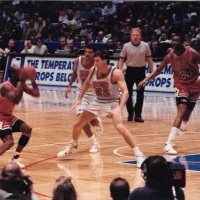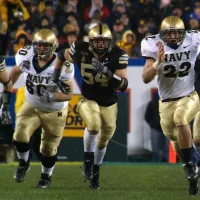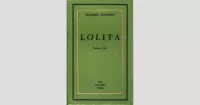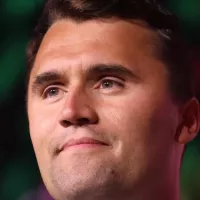The Ohio State University, established in 1870 in Columbus, Ohio, is a prominent public land-grant research institution and part of the University System of Ohio. Renowned for its vast scale, it accommodates close to 50,000 undergraduate and approximately 15,000 graduate students, ranking among the largest universities in the United States. The university's academic structure encompasses sixteen colleges, collectively providing over 400 diverse degree programs at both the undergraduate and graduate levels.
1905: Olmsted Brothers Hired as Architectural Consultants
In 1905, the Olmsted brothers, renowned for designing New York City's Central Park, were brought on as architectural consultants for Ohio State University.
1906: Lybarger Bill Proposal and Passage of the Eagleson Bill
In 1906, Ohio State's president, William Oxley Thompson, supported the Lybarger Bill, which aimed to concentrate higher education funding on Ohio State. While the bill failed, the Eagleson Bill passed, making Ohio State the primary institution for doctoral education and research in the state.
1909: First Ohio Union Constructed
In 1909, the first Ohio Union, a pioneering structure representing the first student union at a public university in the United States, was constructed on the south edge of the South Oval at Ohio State University.
1911: President Thompson Expresses Views on Racial Segregation
In 1911, President Thompson expressed his views against social equality for Black students in a letter, reflecting the prevailing racial segregation practiced at Ohio State and across the nation.
1911: The Sundial Humor Magazine Founded
The year 1911 marked the establishment of The Sundial, a student-written and -published humor magazine at Ohio State University, which holds the distinction of being one of the oldest humor magazines in the country.
1913: Formal Landscape Plan Implemented
By 1913, the Olmsted brothers had created a more formal landscape plan for Ohio State, centering on the Oval and shifting the university's street grid.
1915: Main Library Reinforces Grid Shift
The construction of Ohio State's main library in 1915 further solidified the grid shift implemented by the Olmsted brothers.
1916: Ohio State Joins Association of American Universities
In 1916, Ohio State became the first university in Ohio to be granted membership into the prestigious Association of American Universities.
1916: Ohio State University Joins the Association of American Universities
Ohio State University was elected to the Association of American Universities in 1916.
1934: Establishment of the Ohio State Research Foundation
The Ohio State Research Foundation was established in 1934 to secure external funding for faculty research projects.
1938: Ohio State University Opens Development Office
In 1938, a development office was opened at Ohio State to raise private funds to compensate for reduced state support.
1950: Second Ohio Union Completed
The year 1950 saw the completion of the second Ohio Union at Ohio State University, strategically situated along High Street, southeast of the Oval, where it would serve as a focal point for student life for over half a century.
1952: Founding of the Mershon Center for International Security Studies
Ohio State established the Mershon Center for International Security Studies in 1952.
April 1970: Student Strike and Protests at Ohio State Over University's Rejection of Demands
In April 1970, Ohio State students engaged in a strike, boycotting classes to protest the university's refusal to meet their demands, including the introduction of Black and women's studies programs.
1978: Beginning of Alleged Sexual Abuse by Richard Strauss at Ohio State University
Allegations of sexual abuse against Richard Strauss, employed as a physician by Ohio State University, surfaced, with the alleged abuse occurring between 1978 and 1998.
1978: Allegations Against Richard Strauss Begin
The first reported allegations of sexual misconduct against Ohio State University team physician Richard Strauss date back to 1978, marking the beginning of a long period during which he allegedly abused numerous students.
1979: Ohio State University Becomes Aware of Strauss's Abuse
Ohio State University became aware of the abuse perpetrated by Richard Strauss as early as 1979, according to a report released in May 2019.
1985: The Makio Yearbook Revived
In 1985, The Makio, Ohio State University's official yearbook, was revived after ceasing publication in the late 1970s due to financial struggles.
1987: Ohio State Concludes Fundraising Campaign
In 1987, Ohio State University concluded a fundraising campaign, raising a record-breaking $460 million for a public university at that time.
1987: Jim Jordan Begins Assistant Coaching Role at Ohio State
Jim Jordan served as an assistant coach at Ohio State University between 1987 and 1994, during which time allegations of abuse by Richard Strauss were present.
1989: Wexner Center for the Arts Opens
The Wexner Center for the Arts, known for its deconstructivist architecture, opened at Ohio State in 1989.
1994: Jim Jordan Ends Assistant Coaching Role at Ohio State
Jim Jordan's tenure as an assistant coach at Ohio State University concluded in 1994, amidst allegations of sexual abuse by Richard Strauss within the athletics department.
1994: The Makio's Second Hiatus
The Makio yearbook at Ohio State University faced another interruption in publication in 1994, marking the end of its second run after being revived in 1985.
1995: "Affirm Thy Friendship" Campaign Launched
In 1995, Ohio State University initiated the "Affirm Thy Friendship" fundraising campaign, aiming to raise $850 million.
1996: Strauss Suspended from Duties at Ohio State
Richard Strauss was suspended from his duties at Ohio State University in 1996 due to the sexual abuse allegations against him.
1997: James S. Albus Named "Hero of US Manufacturing"
In 1997, Ohio State University alumnus James S. Albus, a renowned roboticist, was honored as a "Hero of US Manufacturing" by Fortune magazine.
1998: Richard Strauss Retires from Ohio State University
Richard Strauss retired from his position at Ohio State University in 1998 while allegations of sexual abuse against him were circulating.
1999: Ohio State Raises $1 Billion Endowment
Ohio State became one of the first four public universities to achieve a $1 billion endowment in 1999.
2000: "Affirm Thy Friendship" Campaign Exceeds Goal
By 2000, the "Affirm Thy Friendship" campaign at Ohio State University surpassed its target, reaching an impressive $1.23 billion and placing the university among an elite group of public institutions to achieve a billion-dollar campaign.
2000: Ohio State Named a "Public Ivy"
In 2000, Ohio State was recognized as one of America's "Public Ivies" for its high educational quality.
2000: The Makio Returns
In 2000, The Makio yearbook at Ohio State University experienced yet another revival, demonstrating the student body's enduring commitment to preserving this aspect of university history and tradition.
2002: Ohio State Leads in AAAS Fellows
Since 2002, Ohio State University has consistently ranked among the top American universities, often leading or securing the second position, in the number of faculty members elected as Fellows of the American Association for the Advancement of Science (AAAS).
2003: US Department of Homeland Security Establishes Consortium at Ohio State
In 2003, the US Department of Homeland Security established the National Academic Consortium for Homeland Security at Ohio State University, building on the work of the Mershon Center.
October 3, 2004: Buckeye Bullet Sets Electric Vehicle Speed Record
On October 3, 2004, the "Buckeye Bullet", an electric car developed by Ohio State University students, achieved a world record speed of 271.737 mph at Utah's Bonneville Salt Flats, establishing a new benchmark for electric vehicle speed.
October 2004: Knowlton Hall Dedicated
Knowlton Hall, home to Ohio State's architecture and planning programs, was dedicated in October 2004.
2004: Political Science Program Ranked Highly
Ohio State's political science program was ranked first among public institutions and fourth overall globally in 2004 by Simon Hix.
2005: Endowment Reaches $1.73 Billion
By the end of 2005, Ohio State's endowment had grown to $1.73 billion, ranking seventh among public universities.
2005: Ohio State Achieves Historic Triple Championship Win
During the 2005-2006 academic year, Ohio State University secured a historic milestone by becoming the first Big Ten team to capture conference championships in football, men's basketball, and women's basketball.
2005: Ohio State University Receives Exemplary Rating for Junior Faculty Workplace Satisfaction
In 2005, Ohio State University participated in a survey conducted by the Collaborative on Academic Careers in Higher Education (COACHE) and was rated as "exemplary" in four out of seven aspects of workplace satisfaction for junior faculty members.
June 2006: Endowment Surpasses $2 Billion
In June 2006, Ohio State's endowment surpassed the $2 billion mark.
2006: Ohio State University Maintains Exemplary Rating for Junior Faculty Workplace Satisfaction
In 2006, Ohio State University continued to prioritize the well-being of its junior faculty, as evidenced by the "exemplary" rating it received for the second consecutive year in a survey conducted by the Collaborative on Academic Careers in Higher Education (COACHE).
2006: Ohio State Repeats Triple Championship Victory
Ohio State University replicated its extraordinary feat in the 2006-2007 academic year, once again clinching conference championships in football, men's basketball, and women's basketball, solidifying their dominance in the Big Ten Conference.
2006: Ohio State's Research Expenditures Rank High
Ohio State's research expenditures reached $652 million in 2006, ranking seventh among public universities and eleventh overall.
February 2007: Demolition of the Second Ohio Union
The second Ohio Union, a central hub for student life at Ohio State University for over five decades, was demolished in February 2007 to make way for a new, modern facility.
2007: Political Science Program Ranked Ninth Nationally
A 2007 study in PS: Political Science & Politics ranked Ohio State's political science program ninth in the United States.
2007: President Gee Announces New Fundraising Campaign
During his welcoming ceremony in the fall of 2007, returning President E. Gordon Gee revealed Ohio State University's ambitious $2.5 billion fundraising campaign.
2007: Ohio State's Industry-Sponsored Research Ranked Third
In 2007, Ohio State was ranked third among all American universities for private industry-sponsored research.
2007: Sports Illustrated Recognizes Ohio State Athletics
In 2007, Sports Illustrated bestowed the moniker "The Program" upon Ohio State University's athletic program, acknowledging its exceptional facilities, extensive roster of successful men's and women's sports teams, and the unwavering financial backing of a devoted fan base.
2007: Buckeye Bullet 2 Launched
The Buckeye Bullet 2 was launched in 2007, aiming to break the land speed record for hydrogen fuel cell vehicles. This project was a collaboration between Ohio State University engineering students, Ford Motor Company engineers, and the "Center for Automotive Research-Intelligent Transportation" (CAR-IT).
2008: Ohio State Faculty Garners Recognition from Prestigious Academies
In 2008, Ohio State University boasted an esteemed faculty that included 21 members of the National Academy of Sciences or National Academy of Engineering, four members of the Institute of Medicine, and 177 elected fellows of the American Association for the Advancement of Science.
2009: 17 Ohio State Faculty Members Elected as AAAS Fellows
In 2009, Ohio State University continued its legacy of academic excellence as 17 of its faculty members were elected as Fellows of the American Association for the Advancement of Science (AAAS).
2010: New Ohio Union Opens
In 2010, the new Ohio Union at Ohio State University was completed and opened its doors to students, offering a wide range of modern facilities and amenities.
2011: Les Wexner Pledges $100 Million to Ohio State
Les Wexner, a billionaire businessman and former Ohio State Board of Trustees member, pledged a $100 million donation to the university in 2011.
2012: Ohio State University Medical Center Renamed Wexner Medical Center
In 2012, Ohio State University Medical Center was renamed the Wexner Medical Center in recognition of Les Wexner's contributions to the university.
2014: Michael V. Drake Becomes Ohio State's 15th President
Michael V. Drake assumed the role of Ohio State University's 15th president in 2014.
January 12, 2015: Ohio State Buckeyes Win Their First College Football Playoff National Championship
On January 12, 2015, the Ohio State Buckeyes won their first-ever College Football Playoff National Championship, defeating the Oregon Ducks 42-20.
November 28, 2016: Terrorist Attack at Ohio State University
On November 28, 2016, a terrorist attack involving a vehicle-ramming and stabbing occurred at Ohio State University's Watts Hall, resulting in injuries and the death of the attacker, Abdul Razak Ali Artan, who was shot by an OSU police officer.
2016: Fisher College of Business Ranked 14th by Bloomberg
Bloomberg Businessweek ranked Ohio State's Fisher College of Business undergraduate program as the 14th best in the nation in 2016.
2017: Ohio State Football Program Valuation
By 2017, Ohio State University's football program achieved a remarkable valuation of $1.5 billion, solidifying its position as the highest-valued college football program in the nation.
2017: Research Expenditures Reach $864 Million
Research expenditures at Ohio State continued to grow, reaching $864 million in 2017.
February 2018: Sexual Civility and Empowerment Unit Suspended
The Sexual Civility and Empowerment unit at Ohio State University was suspended in February 2018 after an external review raised concerns about the unit's handling of sexual assault cases.
April 2018: Independent Investigation Launched into Sexual Abuse Allegations Against Richard Strauss
In April 2018, an independent investigation was initiated to examine allegations of sexual abuse by Richard Strauss during his tenure as a physician at Ohio State University's Athletics Department and Student Health Center from 1978 to 1998.
June 2018: Ohio State Dissolves Sexual Civility and Empowerment Unit
In June 2018, Ohio State University made the decision to dismantle its Sexual Civility and Empowerment (SCE) unit and eliminate four positions within the unit. This action followed concerns about mismanagement and inadequate support for sexual assault survivors.
July 2018: Wrestlers Accuse Former Coaches of Inaction Against Strauss's Alleged Abuse
In July 2018, former wrestlers came forward with accusations against former head coach Russ Hellickson and then-assistant coach Jim Jordan, alleging they were aware of Strauss's alleged abuse but failed to intervene.
July 20, 2018: Reports of Sexual Misconduct by Richard Strauss Surface
On July 20, 2018, BBC News reported that more than 100 male students, many of whom were athletes from 14 sports at Ohio State University, had come forward with allegations of sexual misconduct against Richard Strauss, a deceased team physician. The allegations, which dated back to 1978, included claims of groping and taking nude photographs of patients without their consent.
May 2019: Report Finds Widespread Abuse by Strauss and Failure to Report by OSU
A report released in May 2019 concluded that Richard Strauss abused at least 177 male students and that Ohio State University was aware of the abuse as early as 1979 but failed to report it to authorities.
2019: "Time and Change" Campaign Launched
In 2019, as part of Ohio State University's 150th-anniversary celebrations, President Michael V. Drake launched the "Time and Change" campaign with an ambitious goal of $4.5 billion from 1 million donors.
May 2020: Ohio State Settles Sexual Abuse Lawsuit
In May 2020, Ohio State University reached a settlement agreement, agreeing to pay $40.9 million to the survivors of sexual abuse by former university physician Richard Strauss.
2020: National Merit Scholars
During the 2020-2021 academic year, 26 Ohio State freshmen were recognized as National Merit Scholars.
2020: Kristina M. Johnson Becomes Ohio State's 16th President
Kristina M. Johnson took office as Ohio State University's 16th president in 2020.
2021: Class of 2025 Admissions Statistics
For the fall 2021 enrollment period, Ohio State received over 58,000 applications and accepted 33,269, resulting in 8,423 enrollments.
2021: Investment in Innovation District Announced
In 2021, President Kristina M. Johnson revealed plans to invest $750 million over ten years in research, including the creation of the Innovation District.
2021: Ohio State Ranked 12th for Research Expenditures
The National Science Foundation ranked Ohio State 12th among American universities for research and development expenditures in 2021, totaling $1.23 billion.
2021: Freshman Class Standardized Test Scores
The middle 50% of the enrolled freshman class in 2021 had SAT scores between 1260-1420 and ACT scores between 26 and 32.
June 22, 2022: Ohio State Granted Trademark for "The"
On June 22, 2022, the United States Patent and Trademark Office granted Ohio State a trademark for the word "the," commonly emphasized by the university and its fans, especially in relation to athletics.
April 2023: Howard Tucker Recognized as World's Oldest Living Practicing Doctor
In April 2023, Howard Tucker, an alumnus of Ohio State University for both his undergraduate and medical studies, was recognized as the world's oldest living practicing doctor at the age of 100.
October 7, 2023: Pro-Palestinian Protests Begin at Ohio State University
Starting on October 7, 2023, a series of protests in support of Palestine took place at Ohio State University, sparked by the ongoing Israeli-Palestinian conflict.
2023: Innovation District Construction Completed
Construction of the Innovation District, an interdisciplinary research facility at Ohio State, was completed in 2023.
2023: Ohio State University's Endowment Reaches $7.4 Billion
In 2023, Ohio State University reported a $7.4 billion endowment.
2023: Walter E. Carter Jr. Becomes Ohio State's 17th President
In 2023, Walter E. Carter Jr. became the 17th president of Ohio State University.
April 25, 2024: Solidarity Encampment and Arrests During Protests at Ohio State
On April 25, 2024, a solidarity encampment established on Ohio State University's South Oval in support of Palestine led to 36 arrests. These arrests, along with others during related protests, marked the largest mass arrest on campus since the Vietnam War protests of 1969-1970.
2024: Calls for Removal of Thompson's Statue Met with Delays
Attempts to remove Thompson's statue from the Oval in 2024 were met with a lengthy review process by the university, citing the thoroughness required for such decisions.
2024: Global University Rankings
In 2024, Times Higher Education ranked Ohio State tied for 99th globally, while QS World University Rankings placed it 151st.
Mentioned in this timeline

Basketball is a team sport played on a rectangular court...

College football is a popular amateur sport in the United...
Sports Illustrated SI is an American sports magazine launched in...
BBC News a division of the British Broadcasting Corporation is...

News encompasses information about current events disseminated through various media...

Football is a family of team sports primarily involving kicking...
Trending
4 months ago Trump Involved in Kennedy Center Honors Announcement, Surprising Staff with his appearance.

Lolita a novel by Vladimir Nabokov centers on Humbert Humbert a literature professor obsessed with Dolores Haze a -year-old girl...
7 months ago Galatasaray vs Kayserispor: Match Details, Championship Hopes, and Okan Buruk's Strategy

2 months ago Learner Tien faces Nuno Borges in ATP Paris Masters 2025 first round.

8 months ago Wiz Khalifa Questions Earth's Shape: Rapper's Flat Earth Theory Explained
18 days ago Seattle Thanksgiving Weather: Records, Calming, and Possible Cold Patterns Looming Ahead
Popular

Candace Owens is an American conservative political commentator and author...

XXXTentacion born Jahseh Dwayne Ricardo Onfroy was a controversial yet...

Tucker Carlson is an American conservative political commentator known for...

Ilhan Omar is an American politician currently serving as the...

Kashyap Pramod Patel is an American lawyer who became the...

Charles James Charlie Kirk was a prominent American right-wing political...